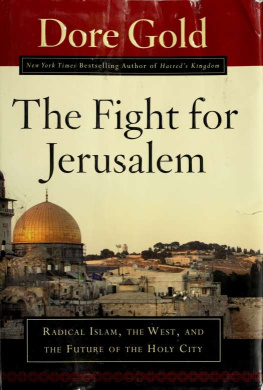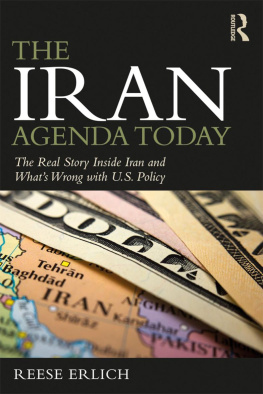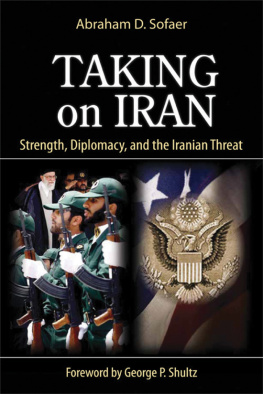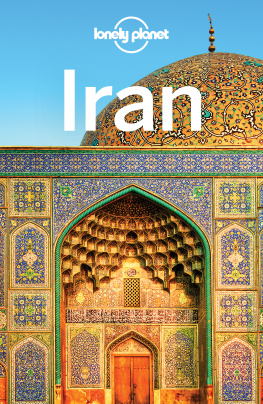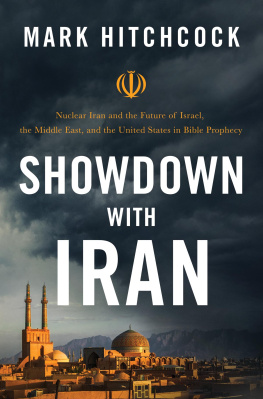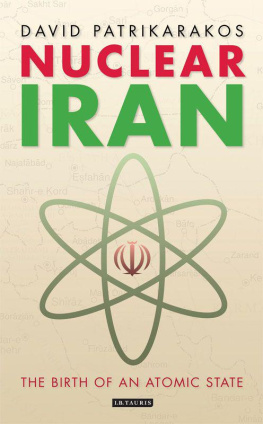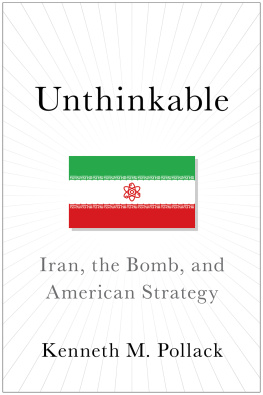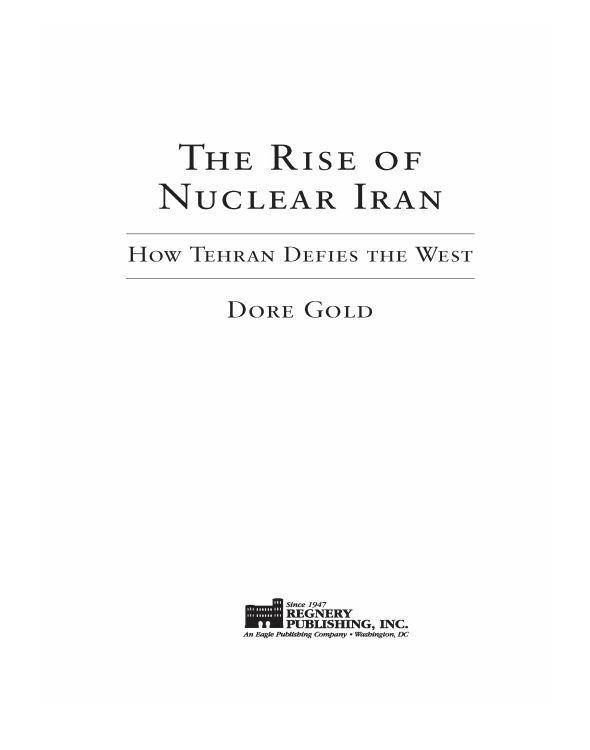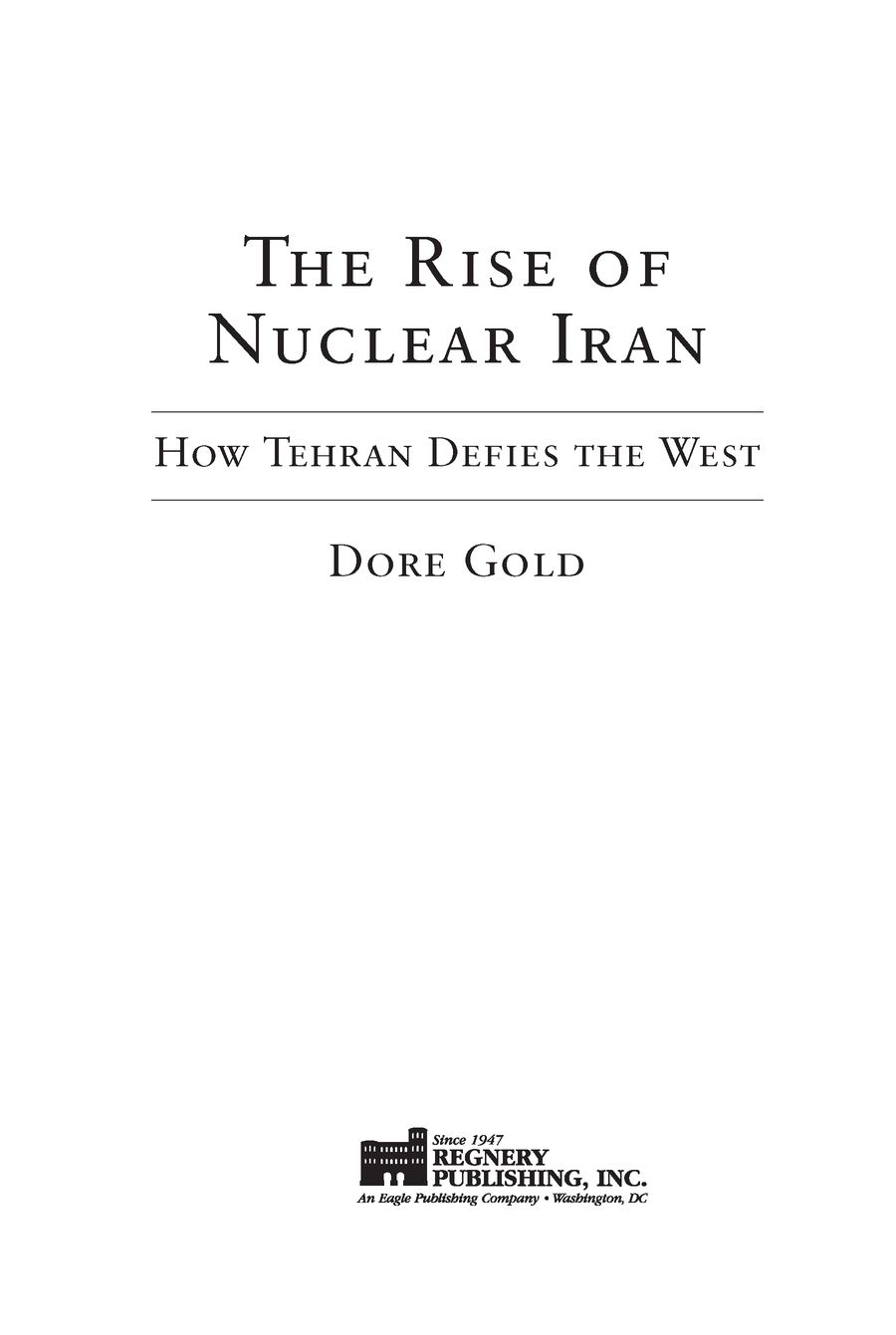Table of Contents
TO MY FATHER, ISADORE GLASBAND, WHOSE UNTIMELY DEATH AFFECTED MY WHOLE LIFE.
A Note on Terms
In order to assist the English-speaking reader, the spelling of Arabic and Farsi terms throughout this book has been based on common usage in the United States and the United Kingdom (i.e., spellings commonly used by major newspapers and government agencies), and not on formal transliteration.
Glossary
AyatollahThe Sign of Allah. The highest level of authority for a Shiite cleric.
BasijLiterally, Mobilization. Paramilitary force serving along side of the Revolutionary Guards as a reserve force. Formally merged with the Revolutionary Guards in 2007.
FaqihA theologian or jurisprudent.
FatwaA formal legal opinion on Islamic law.
GIAFrench Acronym for Armed Islamic Group. GIA seeks to overthrow the Algerian government and establish an Islamic state. Receives Iranian aid. GIA has been designated as an international terrorist organization by the U.S. Department of State.
HamasArabic acronym for Islamic Resistance Movement.
Founded in 1987, Hamas serves as the Palestinian branch of the Muslim Brotherhood. Hamas has been designated by the U.S. Department of State as an international terrorist organization.
HojatiehA secret Shiite society in Iran, founded in 1954, that supported violent measures against memebers of the Bahai faith. It also sought to spread the belief among its adherents that they had to prepare for the return of the Hidden Imam. Ahmadinejad was likely influenced by the Hojatieh.
HizbullahLiterally, Party of God. Formed in 1982, Hizbullah is a pro-Iranian Lebanese Shiite Militia. Iran created Hizbullah offshoots in the Arabian Peninsula. Designated as an international terrorist organization by the U.S. Department of State.
Hojat al-IslamProof of Islam. The title of middle-ranking mullahs just one level below ayatollah.
ImamPrayer leader. In Twelver Shiite Islam, the Imam is one of the twelve descendents of Ali. The Twelfth Imam is currently the Hidden Imam, but will be revealed as the Mahdi.
JihadLiterally, struggle. Originally a holy war waged by Muslims against hostile non-Muslims or for conquest of territory for Islam.
JahaliyahThe period of ignorance or darkness in pre-Islamic Arabia before the Prophet Muhammad spread Islam in the seventh century.
KafirInfidel. All mankind except the Muslims and the ahl-e-kitab (the people of the book).
KhodehTricking the enemy into misjudging his position.
MahdiLiterally, The Guided One. A figure who will appear just before the end of days, who is also the Twelfth Imam.
MajlisIranian Parliament.
MaktabReligious elementary school.
MujtahidCleric who may interpret the Koran.
MullahDerived from the Arabic word mawla meaning master. Used as a title for a religious scholar in Iran.
RahbarSupreme Leader.
SayyedA descendant of the Prophet and as such entitled to special honors and monetary benefits from charitable donations. (Literally, gentleman).
TahdiyaLiterally, a calm. A temporary lull in the fighting between Israel and Hamas, which they negotiated indirectly through the Egyptians. A tahdiya is far less formal than a cease-fire agreement between two parties.
TaqiyaDissimulation. Hiding ones true faith and beliefs when in a position of weakness.
UlamaThe religious leadership. Singular: alim.
Velayat-e faqihRule by the jurisprudent.
Introduction:
Diplomacy or Democracy
THE RISE OF A NUCLEAR IRAN appeared to be a forgone conclusion on the eve of the Iranian presidential elections of June 12, 2009. The election did not look like it was going to change that direction. Indeed, all four candidates supported continuation of the Iranian nuclear program. Each came from the heart of the Iranian establishment and their very candidacies had to be pre-approved by Irans powerful Guardian Council, half of whose members were directly appointed by Irans Supreme Leader Ayatollah Ali Khamenei. In any case, while the Iranian president had a voice in nuclear matters, it was the un-elected Supreme Leader who had the ultimate authority in deciding Iranian nuclear policy and the direction of any future negotiations with the West as a whole.
In fact, the leading challenger to President Mahmoud Ahmadinejad, former Prime Minister Mir Hossein Mousavi, had been significantly involved in launching the Iranian effort to procure black market centrifuges for the enrichment of uranium in 1987, Moreover, former Iranian President Hashemi Rafsanjani, who emerged as a key Mousavi ally, had been one of the most important sponsors of the Iranian nuclear program throughout the late 1980s and early 1990s.
Though Mousavi was leading the reformist wave in the streets of Tehran against the Iranian regime in 2009, at the time of the 1979 Islamic Revolution he was known as an ideological hard-liner who participated in the interrogation of U.S. diplomats who had been taken hostage in the U.S. Embassy in Tehran. He additionally called for putting them on trial in the editorials that he wrote for the official newspaper of the Islamic Republican Party. Mousavi served as prime minister under Ayatollah Ruhollah Khomeini (Irans first Supreme Leader) from 1981 to 1989. His government was known for its purges of the Iranian bureaucracy and advancing strict Islamic laws. He was thrust into his new role as a symbol of real democratic change more by circumstances than by his past career.
What ignited the streets of Tehran was not Mousavis popularity but rather the sense that the Iranian elections had been rigged. The Iranian regime argued that Ahmadinejad won in every one of Irans thirty provinces and received nearly 63 percent of the votes that had been casttwice as many as Mousavi. Most observers expected a close race. Yet it was claimed that Ahmadinejad received not only a massive majority but also an unprecedented mandate, given that voter turnout reached roughly 85 percent. In 2009, the Supreme Leader declared Ahmadinejad the winner even before the publication of the official results.
Moreover, further undermining the credibility of the results was the Iranian governments announcing the results of the presidential elections within two hours of the polls closing, an incredibly short amount of time considering the 40 million paper ballots which were cast.
Adding to the general suspicion was the memory that there had been serious questions about the election returns when Ahmadinejad was first elected to the presidency in 2005. After gaining only 19.5 percent of the vote during the first round of voting, he unexpectedly won the second round with 64 percent of the vote. These results caused many at the time to suspect that the results of Iranian elections had been arranged in advance.
In both elections, the direct involvement of the Islamic Revolutionary Guard Corps helped advance Ahmadinejad. The Revolutionary Guards and especially their large paramilitary mobilization unitsknown as the Basijserved as campaign activists for Ahmadinejad in his 2005 election. Ahmadinejad, who himself had been an officer in an engineering unit connected to the Revolutionary Guards during the Iran-Iraq War,


